Halo has launched it’s event series – Halo Revelations.
Hosted by Nick Clarkson, the first Halo Revelations event, “Putting AI to Work,” was eye-opening to the many possibilities Artificial Intelligence brings to branding and marketing. The event promised to reshape approaches to these crucial aspects of business, and it did not disappoint.
Kicking off the talks, Kerry Harrison, shared insights into the groundbreaking tools shaping the future. From creating the world’s first AI gin to utilising tools like ChatGPT Bard, Bing, and Claude Co-Pilot for writing, Kerry emphasised the role of AI in saving time on research and planning. AI, according to Kerry, is a powerful ally that generates ideas and information quickly, allowing for the creation of first drafts and structures.
One key takeaway was the importance of understanding what AI can and cannot do. Kerry stressed that while AI is a valuable tool, human intelligence is essential for strategy, creative thinking, and research. The message was clear:
“AI is a Collaborator, not a Successor.” – Kerry Harrison
Neil Collard delved into the adoption of AI, citing Moore’s Law and Martec’s Law as foundations for understanding the rapid evolution of technology. His presentation centered on the AI Maturity Model, emphasising the importance of alignment, commitment, and ambition.
Neil urged businesses to be ahead of the curve, stating that delays in adopting AI could result in being left behind. He presented a thought-provoking idea: the alignment-adoption-ambition framework, encouraging businesses to sacrifice the sacrosanct and be open to change for success.
During her talk, Tanya Sharma focused on the transformation of customer experience through AI. She emphasised the importance of the client and customer relationship:
“Customer is King.” – Tanya Sharma
AI, when used, introduces new opportunities in customer experience, offering personalised interactions at scale, enhancing customer support through chatbots, and optimising marketing strategies through data analysis and predictive modelling.
Stepping in for Nick Ellis, Hannah Strickland, and Paul Bailey demystified the hype around AI integration. They revealed that Halo has seamlessly integrated AI into their workflow. During the talk, they gave a case study on a recent branding project they completed for a client, in which they used AI-generated images for the brand. The pair emphasised how AI can provide longevity and quick delivery for a client when on-brand images are created, through the use of AI and specific image prompts

AI can be used in agencies for numerous areas from social content to strategy planning. In practice image prompts can be used as a distinctive asset for a brand. ChatGPT was praised as a valuable collaborator, a partner in ideation that provides a fresh perspective.
“Think of AI as the other person in the room you are bouncing ideas off.” – Paul Bailey
Both Hannah and Paul encouraged a simplified approach, suggesting that AI is like having a parent with infinite patience, allowing strategists to think freely.
From content creation to customer experience, the event showcased AI as a catalyst for unlocking success. The key takeaway was clear: AI is not here to replace but to empower, and adopting it responsibly is the key to staying ahead in the ever-evolving landscape of business and creativity. Don’t be left behind – It is time to Integrate and experiment with AI.
Article was written by Kayjay McDonald-Ferguson (ex-intern at Halo)
Find original article here
In the men’s mental health space, Talk Club stands out as a beacon of hope, fostering conversations, connections and support that save lives. With their distinctive “How are you? Out of 10?” mantra, Talk Club has been making waves in the male mental fitness movement for quite a while. As the brand has flourished, Talk Club recognised the need for strategic and digital expertise to propel it to new heights.
In early 2023, Talk Club partnered with Halo, a brand led creative agency based in Bristol, UK, for a transformative collaboration that aimed to address the gaps in their strategy and digital experience.
Revolutionising the Digital Landscape & Opening Doors
Alongside a strategic review of the brand, the project involved a comprehensive website UX audit and subsequent redesign. Drawing inspiration from Talk Club’s traditional folded paper zines; the new look and feel incorporates a back-to-basics approach that celebrates their ‘make do and mend’ approach.
The new design is founded on the bespoke ‘Bloke’ font created by Fiasco Design, a distinctive and truly ownable asset that informs every aspect of the brand. Halo also worked closely with the Talk Club team to craft a compelling B2B strategy. Understanding that workplace discussions might require a different approach, the strategy for corporate engagement helps Talk Club communicate their diverse offer for mental health fitness in workforces of all sizes.
Results That Speak Volumes
“How were we? Out of 10?” With the website and B2B approach delivering exceptional results, both Talk Club and Halo are delighted with the impact of their collaboration. The website now seamlessly guides visitors from the homepage to actively engaging with the charity, while the B2B outreach communicates the importance of supporting men’s mental fitness in the workplace.
Halo is proud to have contributed its expertise to a cause often overlooked—the mental fitness of men. As Talk Club looks toward the future, both organizations are hopeful that this partnership will leave a lasting imprint on the journey to prevent poor mental health and eliminate suicide among men.
“We are extremely grateful to Halo for creating one of the most incredible mental health websites. Their vision and understanding of Talk Club will help us empower and support many men for years.” Gavin Thorpe – Co-Founder + Co-CEO
Halo is continuing its pro-bono partnership with Talk Club in 2024, driven by a shared commitment to mental health advocacy.
Read our case study here.
–––––––––––––––––––––––––––––
About Talk Club
Talk Club is a male mental fitness movement dedicated to preventing poor mental health and eradicating suicide in men. By fostering safe spaces for open conversations, Talk Club creates a supportive community that emphasises the importance of mental well-being.
For media inquiries, please contact: hello@wearehalo.co.uk
ChatGPT has been around long enough now for us social media types to understand how to apply it to the everyday tasks that we may find tedious. At the very least, it can fill a couple of skill gaps that we can identify for ourselves.
Let’s be honest, it’s a great tool when wielded wisely. An AI chatbot that fulfils your every whim (within reason).
I’ll be the first to put my hands up and say, copywriting is not in my wheelhouse. I often stare at a blank space on my screen wishing for inspiration to strike only to find myself looking for examples online, just as a jumping off point. That is until I realised how I could be using ChatGPT.
Let’s break it down a bit. What are the advantages of this tool for anyone working in social media specifically?
Keep things tidy: finesse copy that you have already come up with;
Research tool: if you’re not 100% sure about a statistic or nugget of information that backs up your post, ask ChatGPT for more info (be sure to fact check the responses though and cite the info if you can, ChatGPT does not provide this);
Idea generation: Don’t know what to post for the next week? Month? Year? Just ask it to generate some content ideas!
Editorial: Grammar not your strong suit? Run your text through ChatGPT and ask it to correct any errors;
Blog title ideas: you know roughly what you want to write about but maybe not sure what angle to approach it.
Generate new hashtags for your brand: they still need to be used consistently though!
Like every tool in your arsenal, there should be some best practice rules in place that you are aware of. Although ChaGPT seems limitless, you’ll quickly find it probably isn’t.
I always think of a phrase that a previous manager used to say; “S**t in, s**t out”
Don’t just accept the first answer from the chatbot. Could it be refined further? Add commands like; Can you make it shorter? Or, even better, give it the specific amount of characters to stick to.
Give it detail. it won’t know unless you tell it. Include tone of voice, what platform you’re posting to, what type of post is it? Give as much context as you can, this will mean that you will get better examples.
If you’re not happy with the response you have received, could you reword your command so that it’s as clear as possible? Keep iterating until it comes up with something usable;
Reuse/reword previous posts: A slightly different twist could give you something new!
If all else fails, take the responses as an inspirational guide. Copy the bits you like the most and then rework it yourself.
Here are a couple of real life examples that I have used (and disregarded in some cases):


There could be a danger, over time, that everyone will start sounding the same. How boring would that be?
This tool does crawl the internet for examples that already exist after all, so isn’t it just plagiarising lot’s of other people’s hard work?
Working in a strategy and design agency, with multiple clients across a number of industries and sectors, I have to be hyper aware of finding the correct tone for each. Uniqueness and creativity is still as important as ever.
Essentially, the key to using ChatGPT is personalisation. You may not be a good copywriter, but try to get good at editing. 99% of the time, the responses you receive from ChatGPT may not be exactly right, and that’s ok, add your personal touches and knowledge to it.
No-one knows your brand tone of voice better than you (hopefully) so don’t allow this tool to change it.
We still require that human touch and a spark of creativity.
Your brand – you’ve spent years getting it to the exact place you want it to be in and now it’s there, in that perfect position in your market. Your audience can now make an informed, rational decision on your brand. Everything’s perfect.
Except, it isn’t perfect. And your audience won’t make a rational decision.
Let’s take a step back for a minute. It has become increasingly accepted that your brand is no longer simply your logo, or visual identity, but is more about the experience or environment linked to your business, product or service. Your brand can no longer be considered a vehicle through which to facilitate a desired transaction, from business to consumer. It shouldn’t even be considered the sole property of the business it is associated with.
Your brand is shaped by the relationships formed in that space in-between business and people, and importantly between people themselves. It is in this acknowledgement of brand being about relationships that we must appreciate two key points:
no relationship remains the same – relationships always evolve
no-one wants to be in a relationship with someone perfect
In order to have healthy relationships you need to appreciate that people will not seek to understand your brand intellectually. Decisions are very often not made intellectually but intuitively. What is important isn’t what people know about a brand, but what they feel about a brand.
Evolution
Consider a personal relationship that may well be close to your heart – you and your mum. In one way your relationship with your mum will always remain the same, she is your mum and you are her child. That will never change. However, is that really your relationship, or is that simply a label?
Let’s consider the actual relationship you have with your mum over a lifetime. If we think about the relationship rather than the label we can see how our roles and expectations are constantly evolving. At birth we are totally dependent on our mum, without her we would die. As we grow into childhood we are nurtured by mum, but we are becoming less dependent. As older children / young adults we challenge mum, pushing for independence. Entering adulthood we become friends and equals with mum, still getting support and guidance but being able to share some of our own guidance. As mum ages we find that the dependency role switches, with mum becoming reliant on us and relying on our support. Throughout our life we remain mum and child, but the relationship is constantly evolving.
When considering your brand be aware that your relationship with people will evolve. Be open to changing roles and expectations.
Perfection
So what about perfection? Well, how would you like to be in a relationship with someone who is perfect? Someone who never does anything wrong, is always right, always the best, infallible. Sounds pretty awful right? Of course it does because we know that no-one is perfect, we all make mistakes and bad decisions. That’s not a bad thing though, it is what makes us likeable. It’s what builds relationships as everyone is fallible, we are all prone to mistakes. ‘To err is human’.
So if you are hoping to build a relationship with people through brand then forget about trying to seem perfect. We are all fallible and prone to mistakes, but what that gives is the opportunity to show growth, improvement, self-awareness. Perfection leaves no room for improvement – it is a dead state. Forget perfection.
The Space In-Between
When considering your brand, consider it the ‘space in-between’. Your brand is the space in-between numerous contributing factors, such as your business, staff, product, visual identity, customers, detractors, the current environment.
This ‘space in-between’ must be a space of vitality, of evolution, of imperfection, if you want people to relate to the brand and the brand to remain relevant. This ‘space in-between’ is not static or stagnant, it is always in-process. It should be considered temporally rather than spacially. It will most often be appreciated and experienced intuitively not intellectually. When considering your brand – the ‘space in-between’ – it’s not rational, it’s emotional.
Contributed by Paul Bailey Strategy Director Halo
For over 20 years, I’ve been working in or running my own branding agency. First design side, and then moving strategy side, I’ve learned a thing or two in my time. However, there is one thing which I seem to learn but then need to relearn again and again, and that is the need for and the role of transparency.
Now, what has led me to relearning the need for transparency you might ask? Well, in my current role I am Brand Strategy Director. This means I’m not only responsible for the brand strategy work with clients, nor does it mean I’m only responsible for the rest of our strategy team. No, what I take this role to mean is that I am responsible for the understanding and application of brand strategy from the whole of the agency.
As a full-service agency, we have people doing all sorts of roles, from design, to development, to client partnerships. Everyone will, at some point, work with the strategy team on projects, and so I believe that the more they can understand strategy the better and more effective our agency’s work will be. Now, of course, in meetings people get a little window into what we do in strategy, but I realized that in order to really make the strategy teams work transparent I needed to find ways to open up our working. So, I decided that I would decorate the walls with some of the models and frameworks that we might use in a project. (See above)
Models and frameworks seem to be either loved or loathed by strategists, but the use of a good one can create much needed focus at a critical point in a project.
The thing about them is, they’re not intended to give you an answer. In fact, even the best use of the smartest model only ever gives you an approximation of the answer. But for me, that is fine, because in strategy there is never really an answer, there’s just one of a number of answers.
So, I looked through the models I’ve used over the years, printed out some of the best and most used ones, and stuck them on the wall. This immediately led to some great feedback and some very interested people passing our strategy area. Conversations about models, their uses and application, and what they would be useful for, flowed freely. You see, once you put your ways of working out there, people are invested and interested.
In a project, models should be used as your hidden secret. We use them to create focus from a wide range of inputs, but we rarely show them to clients. They’re not really the best way to present work, so we use them as a tool for focusing our work, not presenting it. Good models should be used to cut, to hone, to give you less and not more.
Now there are many models I no longer use, they no longer meet my standards and have been dropped. As I said previously, I’ve spent over 20 years doing this, and one of the things I have learned is what models work, and which ones don’t. So, here’s a short list of a few of the models I still use, and what I use them for.
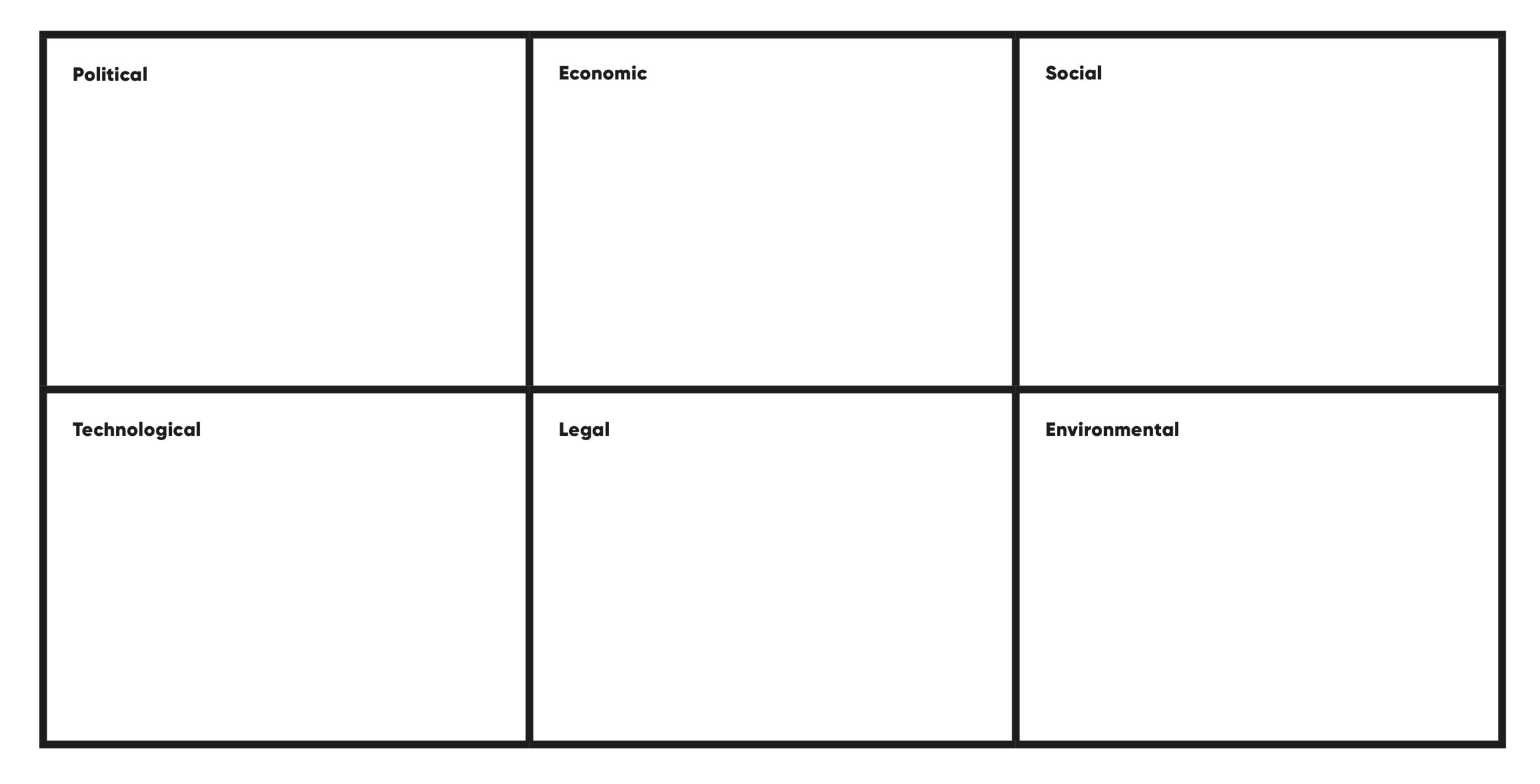
1. PESTLE
This model is old, and many people knock it, but I still use it. Why I use it is I find it a simple and helpful structure to work through one of the aspects of the context within which our brand exists – market forces. The six areas the PESTLE name stands for (Political, Economic, Social, Technological, Legal, Environmental) are still a good way to break down the market forces at play on a business and its associated brand. I find that they help me focus, but also they give an indication as to the areas in which a business has more to think about.
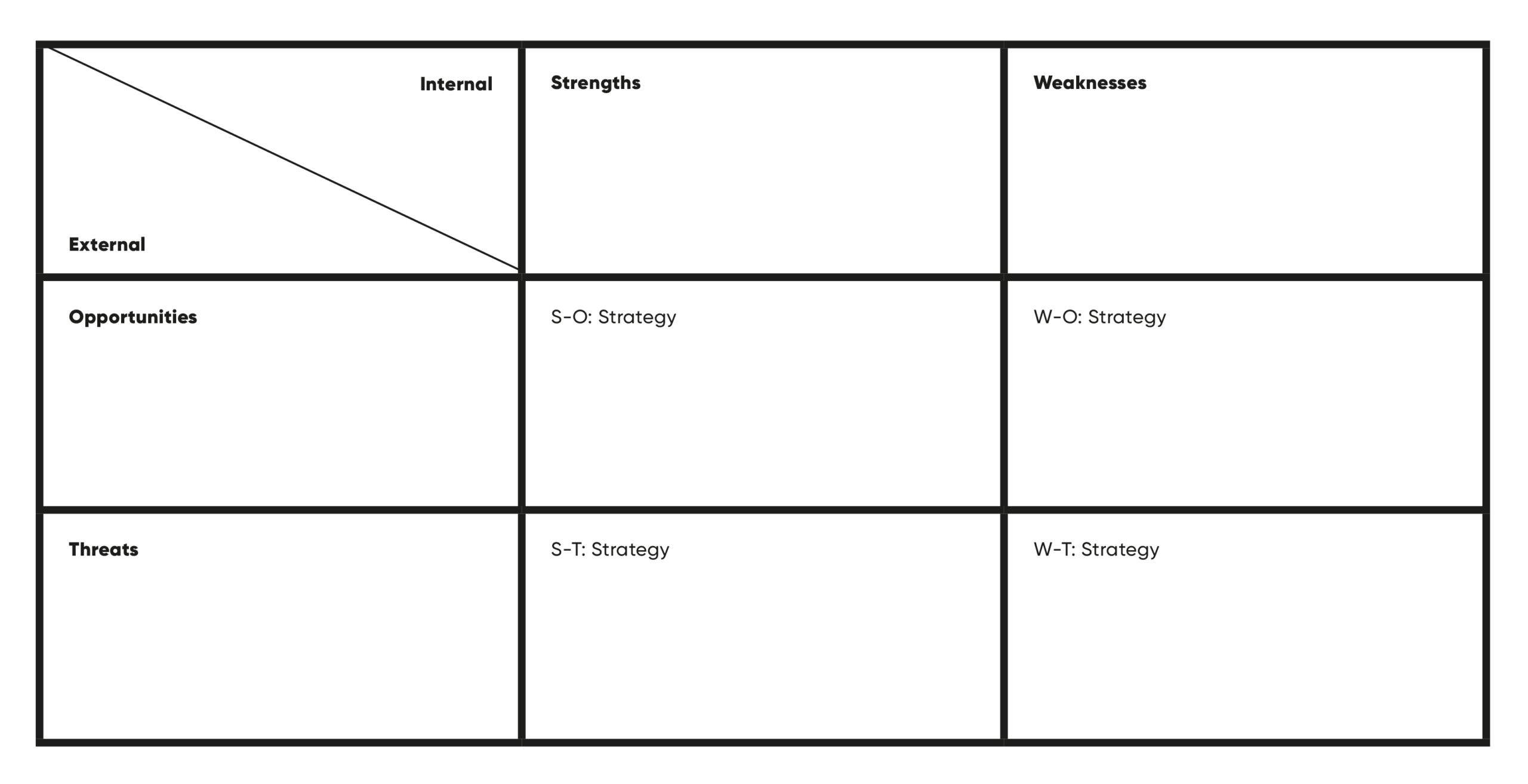
2. SWOT
Yet again, another old model that doesn’t get much love these days. Well, I still love it. When we are researching a brand project there are two key areas we need to find out about – the context (market forces, audience, competition) but also the business itself. The SWOT gives us a very simple model to learn something of what the business is good and bad at, and where they see opportunities and threats. Now, the slight variation in my model is that I use a grid which sets out the strengths and weaknesses, and the opportunities and threats on the outer edges, but on the inside where they cross over there are four panels where you can start to set out strategies for improvement (S-O, S-T, W-O, W-T).
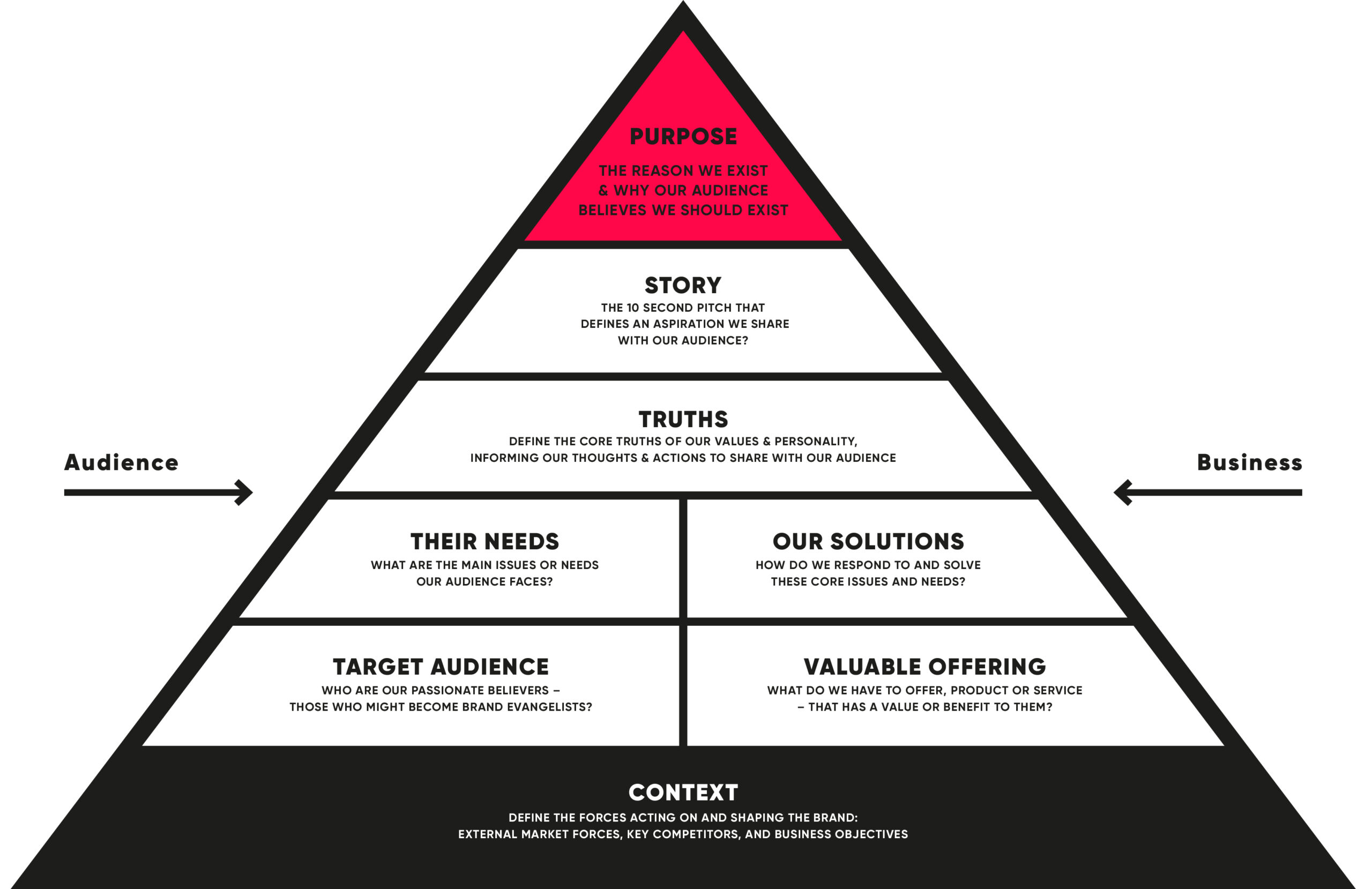
3. Brand Pyramid
Now I don’t think I’ve ever shown this as a pyramid to a client. The reason I find the pyramid useful is that it mirrors the process I go through mentally to try and reach a core brand proposition. At the base of the pyramid is the context within which the brand exists (market forces, audience, competitors). The wider this base is (the more research we can do at this stage) then the more stable the pyramid will be. Diagnosis of the context of a brand is the foundation of a good brand proposition. At the other end of the pyramid is the point, the tip, the core proposition that encapsulates the core value of the brand to its audience. You might manage to get this down to only a few words, or at most a sentence or two, because this should be the distillation of all of your work so far.
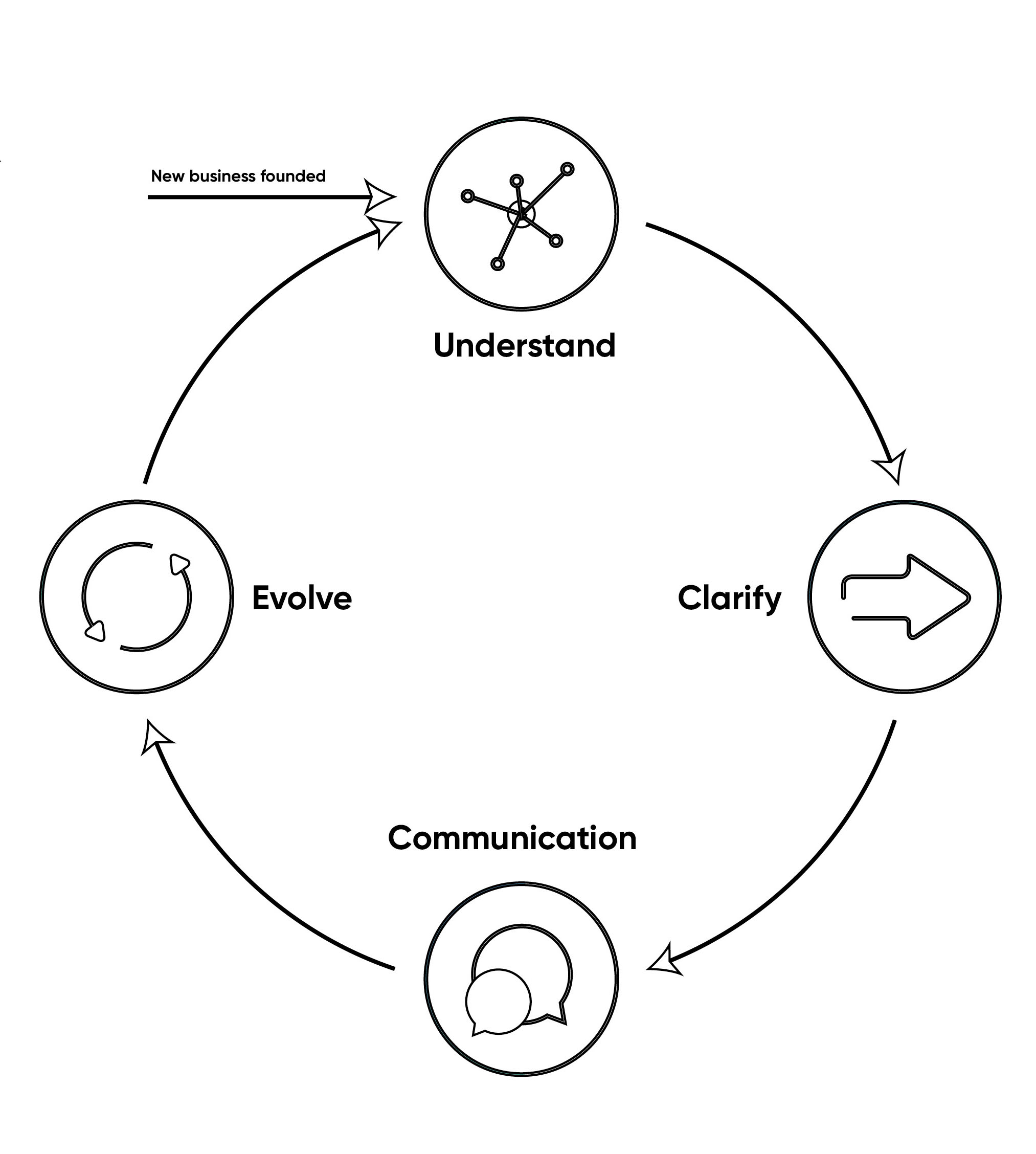
4. Evolutionary Brand Cycle
There are many models like this, but this is the one I use. It is a simple breakdown of a never ending process of evolution which every brand should constantly go through. Because, although we’ve just written a distillation of the brand, in reality the brand is always changing and shifting to a point. A brand is a dynamic entity which evolves over time. So, this model has four stages; Understanding, Clarifying, Communication, and Evolution. Understanding is your research phase. Clarifying is your distillation phase. Communication is your communicating phase. And Evolution is your listening phase. Keep doing these phases, over time, and your brand can shift and move at the right place and the right times.
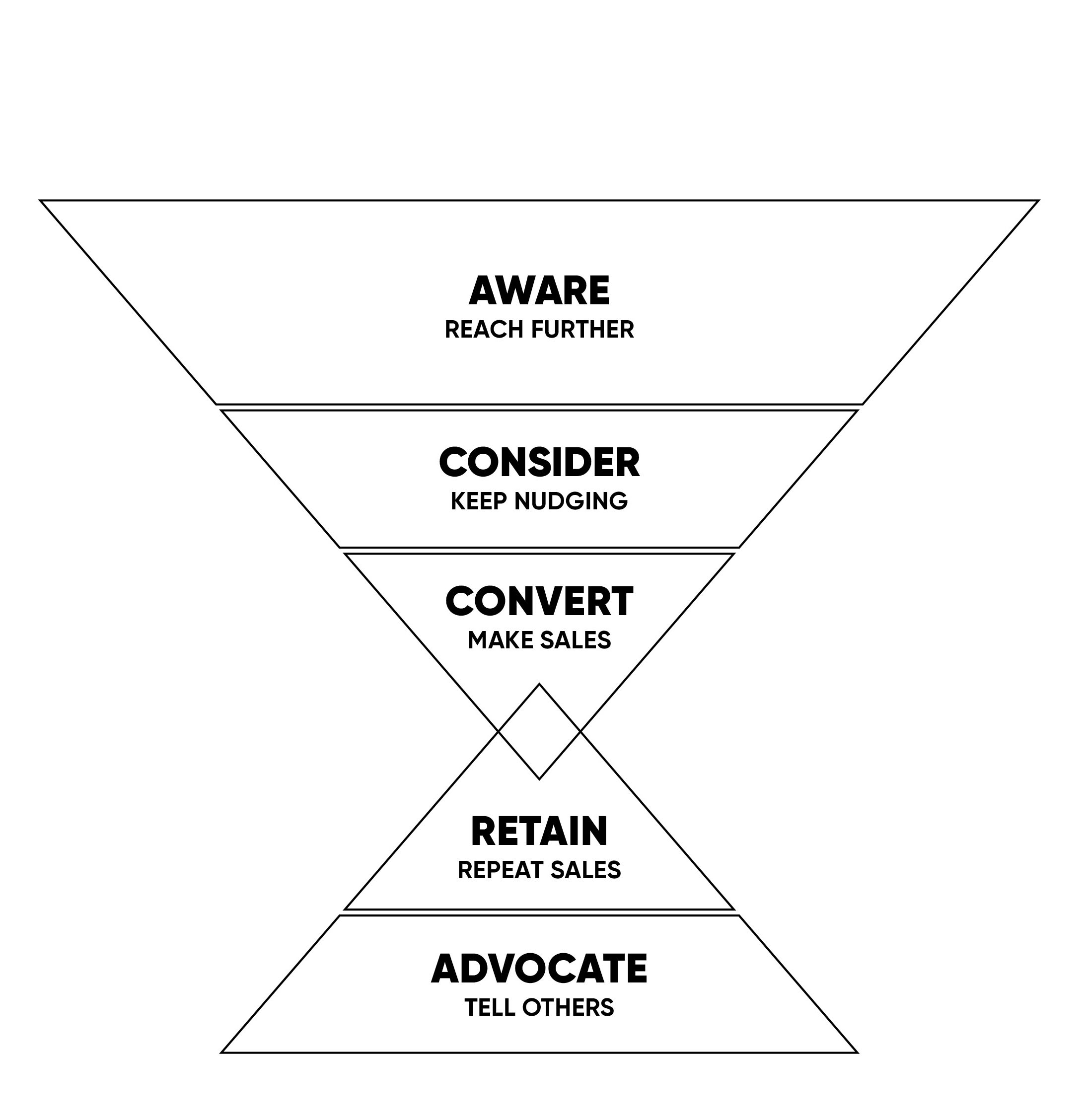
5. Marketing Sales Funnel
The Marketing sales funnel is yet another old and supposedly broken model. Not as far as I am concerned it isn’t. Now, my approach to the marketing sales funnel is quite loose, and we don’t put strict rules on how we use it. What we do find it useful for is assessing what marketing touchpoint should be used for which part of the journey through the funnel. At the top of the funnel we are looking at Awareness, and so touchpoints such as OOH and TVC will feature heavily. At the bottom of our funnel we have Advocacy, so Google Reviews or user reviews may feature here. Really, we find the funnel a helpful tool to give our touchpoints a role and responsibility.
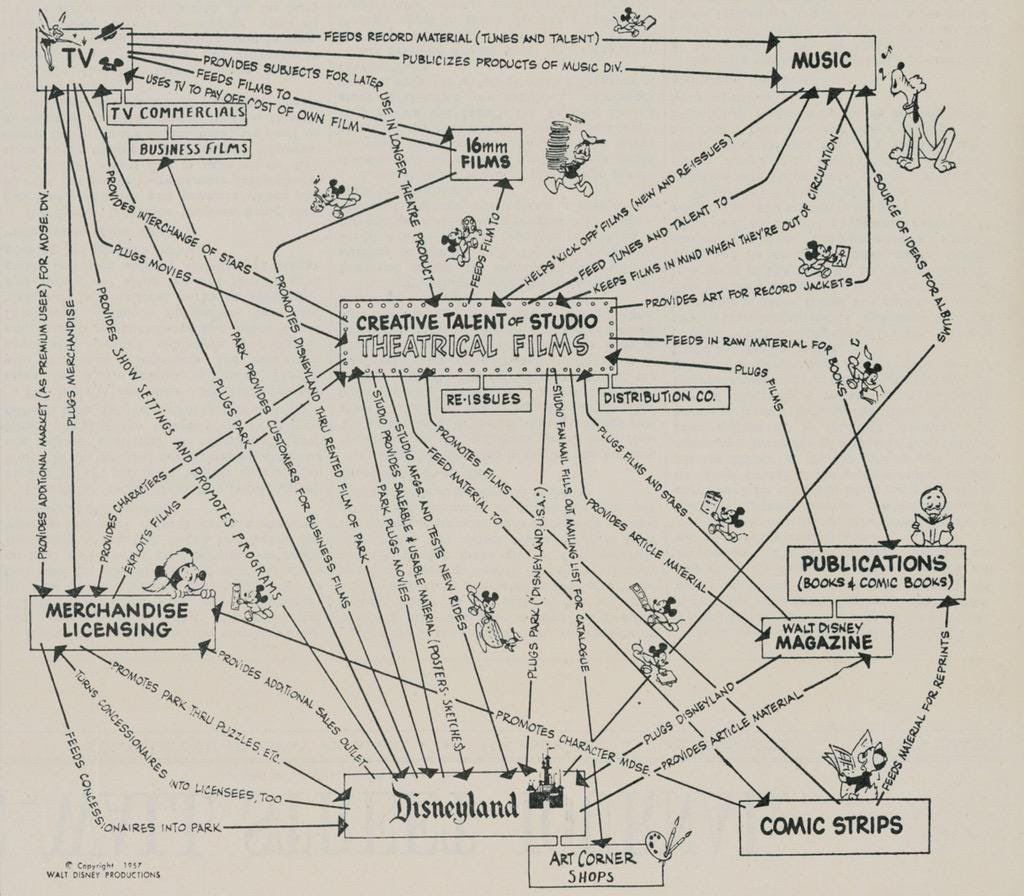
6. Experience Ecosystem
Finally, we move into the Experience ecosystem. What is this you might ask? Well, it is something that we do to give a function to every ‘moment’ a person comes into contact with our brand. A ‘moment’ is an audience-centered view of a touchpoint. Brands are shaped through ‘Associated Memorable Moments’, and every one of these moments in time should be used to encourage a desired action or reaction. Whether that action or reaction is just awareness of your brand, or is a driver to purchase, if you attribute a behavior you would like to encourage from that ‘moment’ you are creating a focus for everything you do. Make sure every moment is clearly identifiable as you, and is remembered for something you would like.
BJ Fogg’s Behavior Model is also useful here – motivation + ability + prompt = behavior.
So, there are six models I use pretty often. Of course, there are many more worth using. From Kapferer’s Brand Identity Prism to Keller’s Brand pyramid, Stephen King’s Planning Cycle to Kotler & Armstrong’s 3 Product Levels. But remember, a model is only there to help you cut and refine. It will never give you the answer, and what you get out is only ever as good as the quality of research you put into it. As I said at the beginning, there is a value in and a need for structure.
Contributed by: Paul Bailey, Strategy Director at Halo
There is an image of an advertising campaign poster making the rounds on social media that has been marked with comments that question the motives and manipulative methods behind the design (see below). It is a good example of social and cultural commentary being added onto a commercial poster, but it is far from a new idea.

Adbusters
The first time I became aware of this type of movement was in the 1990s, by a group called Adbusters. As a graphic design student, and taking great interest in designers such as Jonathan Barnbrook who were very social and counter-cultural in the work they did (and it turns out he was a part of Adbusters too), I was very interested in this movement. Although I didn’t join in with their activities, I followed them with some interest.
Adbusters have spent the 1990s, 2000s, 2010s, and the 2020s railing against capitalism and in particular advertising’s role in capitalism. Their magazine’s international circulation peaked at 120,000 in the late 2000s, but it has been their campaigns which have had more impact. Buy Nothing Day, TV Turnoff Week and Occupy Wall Street have all left their mark, but they are probably best known for their “subvertisements” — adverts which subvert the original message of the advert.
Blaming advertising for playing a central role in creating and maintaining consumer culture, they have used the creative skills and talents against advertising itself. They claim to be combating the negative effects of advertising and empowering its readers to regain control of culture. The big question they ask with all of their work is “Are we consumers and citizens?”
Citizen or consumer?
This is something I believe is an important discussion that those of us who work with brands need to have — are we creating enough space for people to be citizens as well as consumers? This is a big question, and one that brings other factors into play such as ‘brand purpose’ — is a corporate brand the best vehicle to promote a social or environmental purpose — but that is for another article.

Adbusters might have blazed the trail, but now groups such as Brandalism are picking up the ball and sprinting with it. Emerging in the UK during the 2012 Olympics, Brandalism has been using ‘culture jamming’ to rail against corporations with anti-capitalist, anti-consumerist and environmental concerns. Brandalism has also done a lot to expand the people who are able to take part in these activities, by among other things publishing ‘how to’ guides for things like opening poster sites.
Cultural landscape
Now, there are some who are against all of these ‘subvertising’ activities, but that isn’t my view. For me, they are an important addition to the cultural landscape, and can be a valid challenge to corporate power. On top of that, I think that some of the Adbusters and Brandalism work is some of the most creative work out there. Not only are advertising companies getting their work busted, it’s being improved upon at the same time.
If you’re interested in finding out more about this subculture, take a look at the books and websites below.
‘Advertising Shits in Your Head‘ by Vyvian Raoul & Matt Bonner
‘Culture Jam’ by Kalle Lasn
You need to load content from reCAPTCHA to submit the form. Please note that doing so will share data with third-party providers.
More InformationNotifications